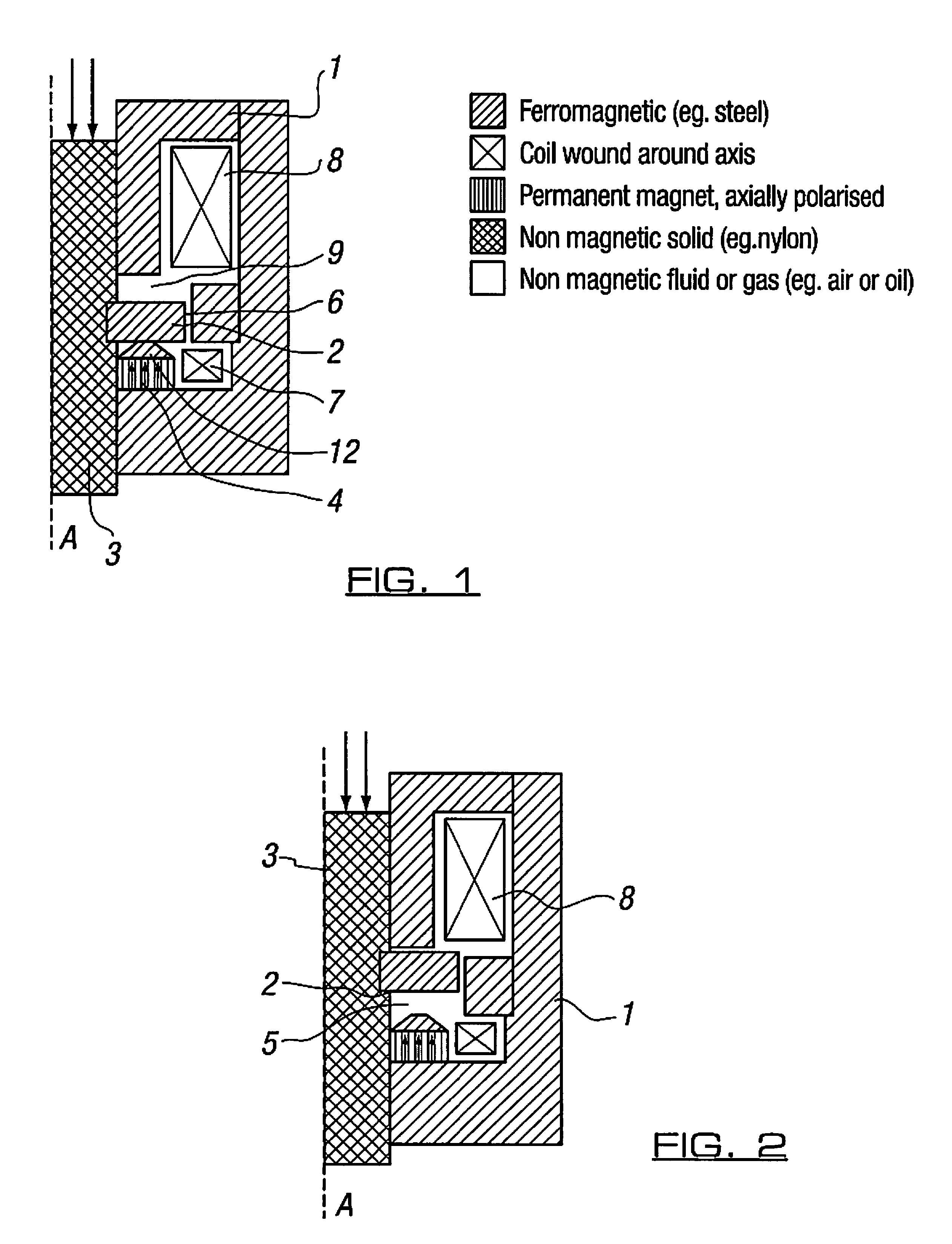Electromagnetic actuator
a technology of electromagnets and actuators, applied in the direction of electromagnets, valve details, cores/yokes, etc., can solve the problems of long valve transition time, inability to achieve the speed of actuation according to the prior art, and inability to accurately commutate the effect of speed
- Summary
- Abstract
- Description
- Claims
- Application Information
AI Technical Summary
Benefits of technology
Problems solved by technology
Method used
Image
Examples
Embodiment Construction
[0026]The actuator of FIG. 1 is symmetrical about an axis A and comprises a core 1 of steel or other ferromagnetic material and which may be formed from a plurality of components. A moving ferromagnetic component (“armature”) 2 is attached via a sliding non-magnetic body 3 to the valve spool or poppet or other element to be actuated.
[0027]A first magnetic circuit incorporates part of the core 1, a permanent magnet 4, an “axial” air gap 5 (“latch gap”, shown in FIG. 2), a “radial” air gap 6, and a first coil (“trigger coil”) 7.
[0028]A second magnetic circuit incorporates part of the core 1, a second coil (“main coil”) 8 forming the solenoid, and an axial air gap (“main gap”) 9, and shares the radial air gap 6 with the first magnetic circuit.
[0029]The actuator holds the armature 2 in the position as shown in FIG. 1 by means of the permanent magnet 4. Flux from this magnet is concentrated to increase the holding force by means of a flux concentrating geometric feature 12 (preferably a ...
PUM
 Login to View More
Login to View More Abstract
Description
Claims
Application Information
 Login to View More
Login to View More - R&D
- Intellectual Property
- Life Sciences
- Materials
- Tech Scout
- Unparalleled Data Quality
- Higher Quality Content
- 60% Fewer Hallucinations
Browse by: Latest US Patents, China's latest patents, Technical Efficacy Thesaurus, Application Domain, Technology Topic, Popular Technical Reports.
© 2025 PatSnap. All rights reserved.Legal|Privacy policy|Modern Slavery Act Transparency Statement|Sitemap|About US| Contact US: help@patsnap.com



